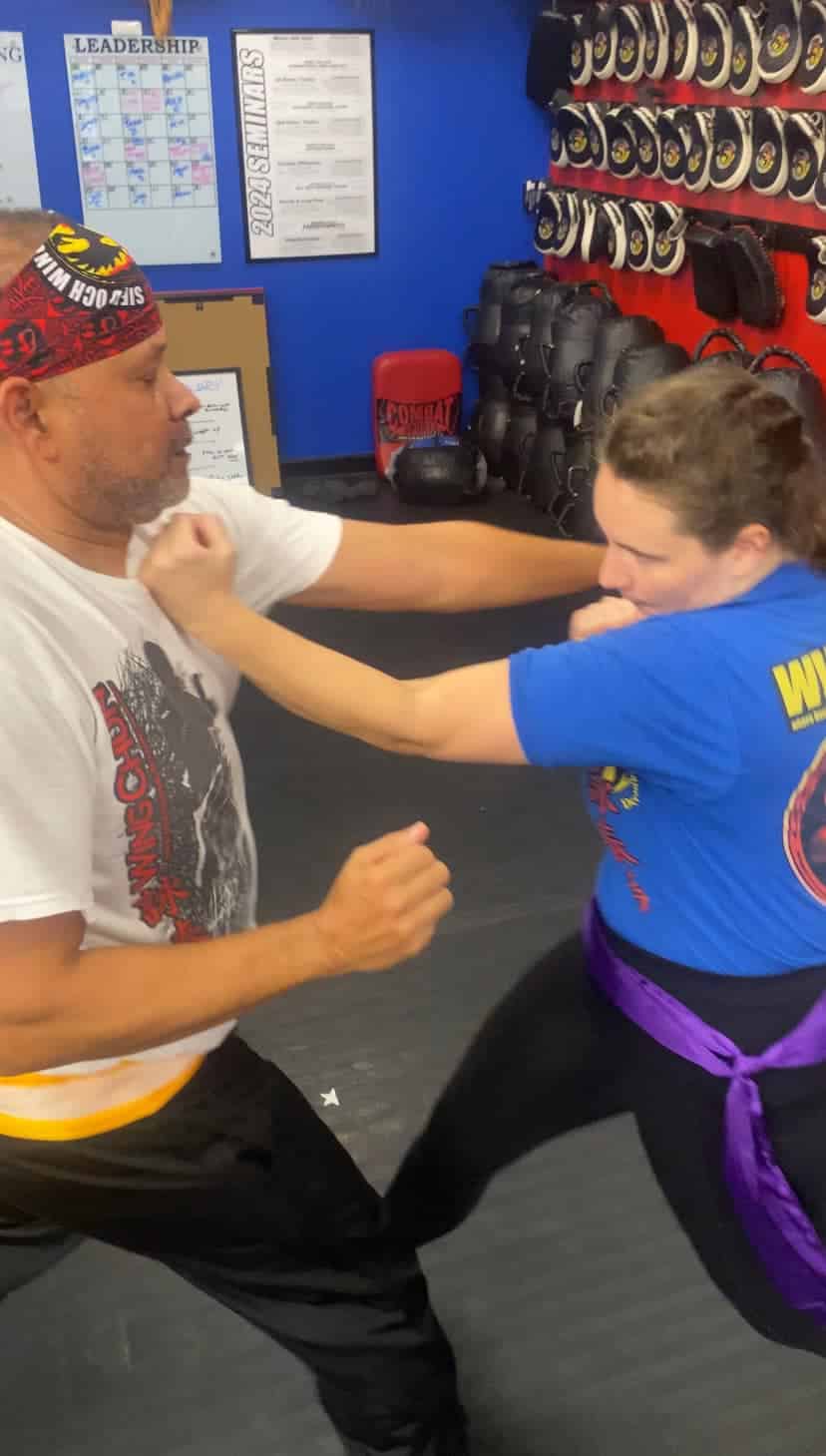Training as a Wing Chun practitioner you should never be in mid-range. This range is where both you and the assailant can strike, punch and kick at your optimum. Why would want to exchange blows or have the assailant at their optimum when attacking you? You wouldn’t. This art’s specialty is close-range combat and relies on two things specifically when training wing chun: timing and range.
Therefore you should either close distance to be on the inside of “in-fighting” or stay out of the assailants range of attack. This causes many great opportunities as the assailant is forced to fight on your timing. As the assailant attempts to either close distance you close just as quick over shooting their intended destination point. This over shot of the assailant creates a close quarter combat situation which is ideal for the Wing Chun practitioner.
Focusing On Wing Chun Timing
If the assailant decides to back up and create distance then the Wing Chun practitioner will attempt to destroy and cause damage to every limb thrown at them by the assailant by means of attack. After causing damage a Wing Chun timing practitioner will then close distance and “eat” their way into the assailant’s centerline vitals. Some assailant’s if knowledgeable about your skills will keep backing up and will rarely attempt to throw strikes so that they do not get damaged.

These assailant are attempting to escape your attacks and create their own timing. This cannot be abided as any control of any aspect of the fight is crucial to keeping the Wing Chun practitioner as safe as possible and maximizing the damage to the assailant.
Focusing On Wing Chun Range
Very fast low to medium long range kicks to the ribs, organs, groin, ephemeral arteries and knee’s are employed to cause damage and hesitation in the assailants movements. This hesitation allows the pause a Wing Chun practitioner needs to take back control.

Thus never stay in mid-range, it is purposeless. Instead bait, time and trap the assailant using close-quarter in-fighting combinations that trap, redirect and allow you to end the fight decisively.
When the fight is no longer close-range make your assailant pay dearly for drawing out the fight by destroy and striking at areas that will cause the maximum amount of pain while maintaining the height of your defensive and offensive Wing Chun tactics.
More info for Wing Chun Timing watch this videos
Why Choose Sifu Och Wing Chun
Practicing provides numerous benefits, including:
- Physical Fitness: Enhance strength, flexibility, and endurance.
- Mental Clarity: Develop focus and discipline through structured training.
- Self-Defense Skills: Learn effective techniques for personal safety.
- Cultural Enrichment: Gain insight into a centuries-old tradition.

Want to Get Started?
Join Sifu Och Wing Chun today and embark on your journey through the world. Fill out our contact form to discover why we are your best choice for Wing Chun Kung Fu and martial arts training in Lakeland, Florida!
Related articles on the Sifu Och Wing Chun website:
Empower Yourself: Experience Personal Growth Through Chinese Martial Arts
https://sifuochwingchun.com/chinese-martial-arts-lakeland-florida-kung-fu/
Unlock Potential: The Incredible Strength of Wing Chun Martial Arts
https://sifuochwingchun.com/the-strength-of-my-wing-chun/


